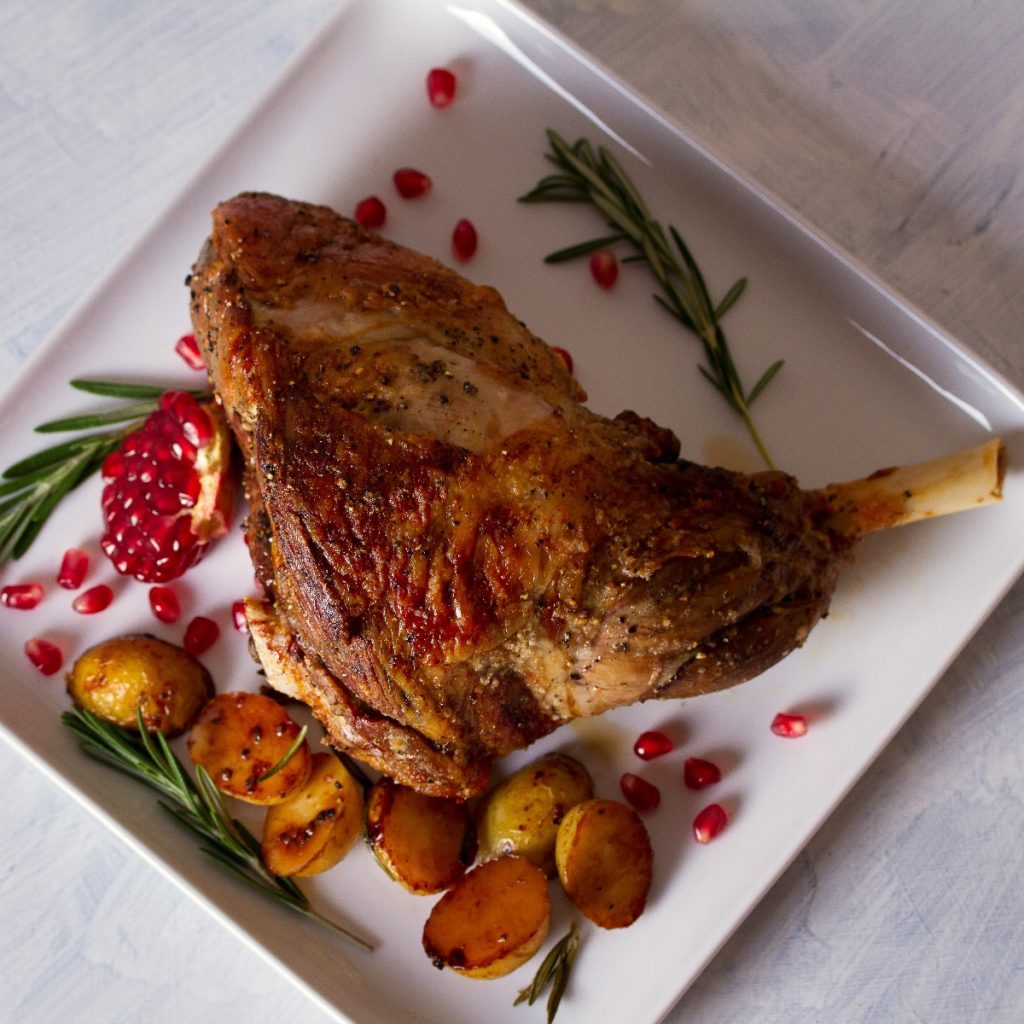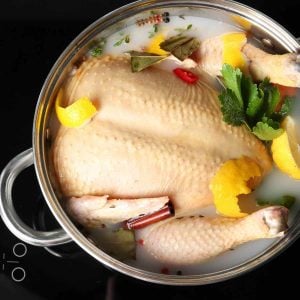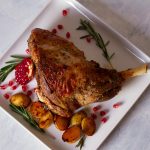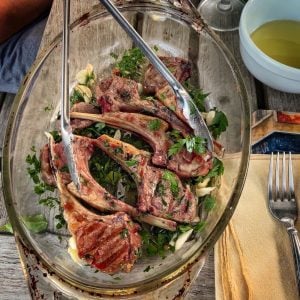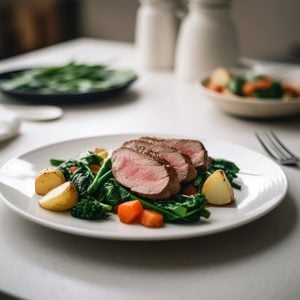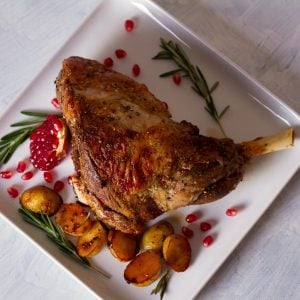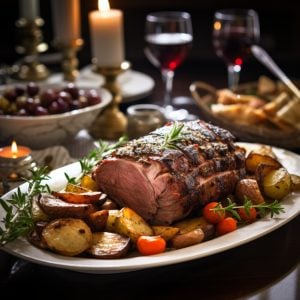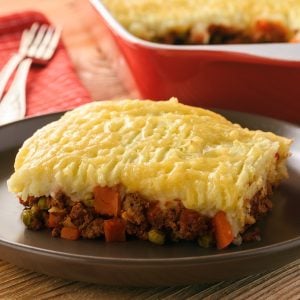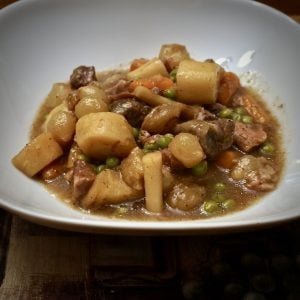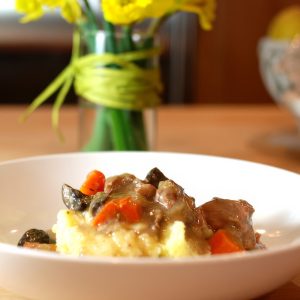One of my favorite Sunday Roasts Growing Up
Roasting a bone-in leg of lamb is one of the most satisfying and impressive meals you can prepare, whether for a holiday feast or a cozy Sunday dinner.
This cut delivers rich, bold flavor and stays wonderfully juicy thanks to the bone, which helps conduct heat and enhances the meat’s natural taste. The aroma of garlic, rosemary, and olive oil slowly roasting into the lamb fills the kitchen and sets the stage for a comforting, elegant meal.
In this recipe, I walk you through how to season, roast, and rest the lamb for perfect results every time. I like to keep the seasoning simple enough to highlight the lamb’s savory character without overpowering it.
The high-heat start helps build a golden crust, while the slower finish ensures the interior cooks evenly and remains tender. Whether you serve it with roasted vegetables, creamy potatoes, or a bright salad, a roast leg of lamb always makes a statement at the table.
Don’t let the size intimidate you—with a little planning and the right method, it’s easy to prepare and deeply rewarding. Once you carve into that beautifully roasted leg, you’ll see why this timeless dish has earned a spot in so many classic menus.
Roast Leg of Lamb
Ingredients
- 1 leg of lamb bone-in 5 to 7 pounds
- 6 cloves garlic sliced thinly
- 2 tablespoons fresh rosemary chopped
- 2 tablespoons fresh thyme chopped
- 2 tablespoons olive oil
- 2 tablespoons Dijon mustard
- salt and pepper to taste
Instructions
- Take the bone-in leg of lamb out of the refrigerator and let it sit at room temperature for about 30 minutes to an hour before roasting. Preheat your oven to 375°F.
- Pat the leg of the lamb dry with paper towels to remove any excess moisture. This helps the seasoning stick better and promotes better browning during roasting.
- With a sharp knife, make small slits all over the lamb. Insert the sliced garlic into the slits.
- Mix the chopped rosemary, thyme, olive oil, Dijon mustard, salt, and black pepper in a small bowl to make a flavorful herb rub.
- Rub the herb mixture all over the lamb, making sure to coat it thoroughly, including the nooks and crannies. This will infuse the meat with aromatic flavors.
- Place the seasoned leg of lamb on a roasting rack in a roasting pan, bone-side down. The roasting rack elevates the meat and circulates hot air around it, promoting even cooking.
- Roast the lamb in the preheated oven for about 1.5 to 2 hours, depending on your desired level of doneness. Use a meat thermometer inserted into the thickest part of the meat, away from the bone, to check the internal temperature. For medium-rare, aim for around 135°F (57°C), and for medium, around 145°F (63°C). Keep in mind that the temperature will rise a few degrees while resting.
- Once the lamb reaches your desired level of doneness, remove it from the oven and tent it loosely with aluminum foil. Allow the lamb to rest for about 15 to 20 minutes. Resting allows the juices to redistribute, making the meat more tender and flavorful.
- Carve the roasted bone-in leg of lamb and serve it with your favorite side dishes.
Notes
What is a bone-in leg of lamb?
In culinary terms, a “bone-in leg of lamb” refers to a specific cut of lamb meat. The hind leg of a lamb or young sheep is typically sold with the bone intact, providing added flavor and juiciness to the meat during cooking. The bone-in leg of lamb is a popular choice for roasting and is often a centerpiece for special occasions and festive meals.
The bone-in leg of lamb can be prepared and cooked in various ways, such as roasting, grilling, or braising, depending on personal preferences and the desired level of doneness. The bone imparts flavor to the surrounding meat during cooking and helps retain moisture, resulting in a tender and flavorful dish.
When purchasing a bone-in leg of lamb, you can ask your butcher to trim and prepare it according to your specific requirements. Proper cooking instructions and recommended internal temperature guidelines are essential to ensure a safe and delicious dining experience. Additionally, pairing the meat with various herbs, spices, and accompaniments can enhance its taste and presentation.
What are the advantages of cooking a bone-in leg of lamb?
Category | Benefit | Description |
| Enhanced Flavor | Richer taste | The bone imparts a savory depth and the marrow adds richness, enhancing the overall flavor of the lamb. |
| Moisture Retention | Juicier meat | The bone acts as an insulator, helping retain moisture during cooking and resulting in a more tender roast. |
| Even Cooking | Consistent doneness | The bone distributes heat evenly, preventing overcooked or undercooked sections in the leg. |
| Presentation | Impressive appearance | A bone-in leg looks elegant and dramatic at the table; the bone also makes carving easier. |
| Bone Broth Use | Makes great stock | The leftover bone can be simmered with herbs and vegetables to create a flavorful broth or stock. |
| Cooking Versatility | Multiple techniques possible | Suitable for roasting, grilling, or braising; the bone adds structure and works well with different cooking methods. |
| Nutritional Value | Added nutrients from marrow | Bone marrow provides healthy fats, vitamins, and minerals, adding nutritional value to the meal. |
Cooking a bone-in leg of lamb not only adds to the taste and texture of the dish but also enhances the overall dining experience, making it a popular choice for special occasions and gatherings.
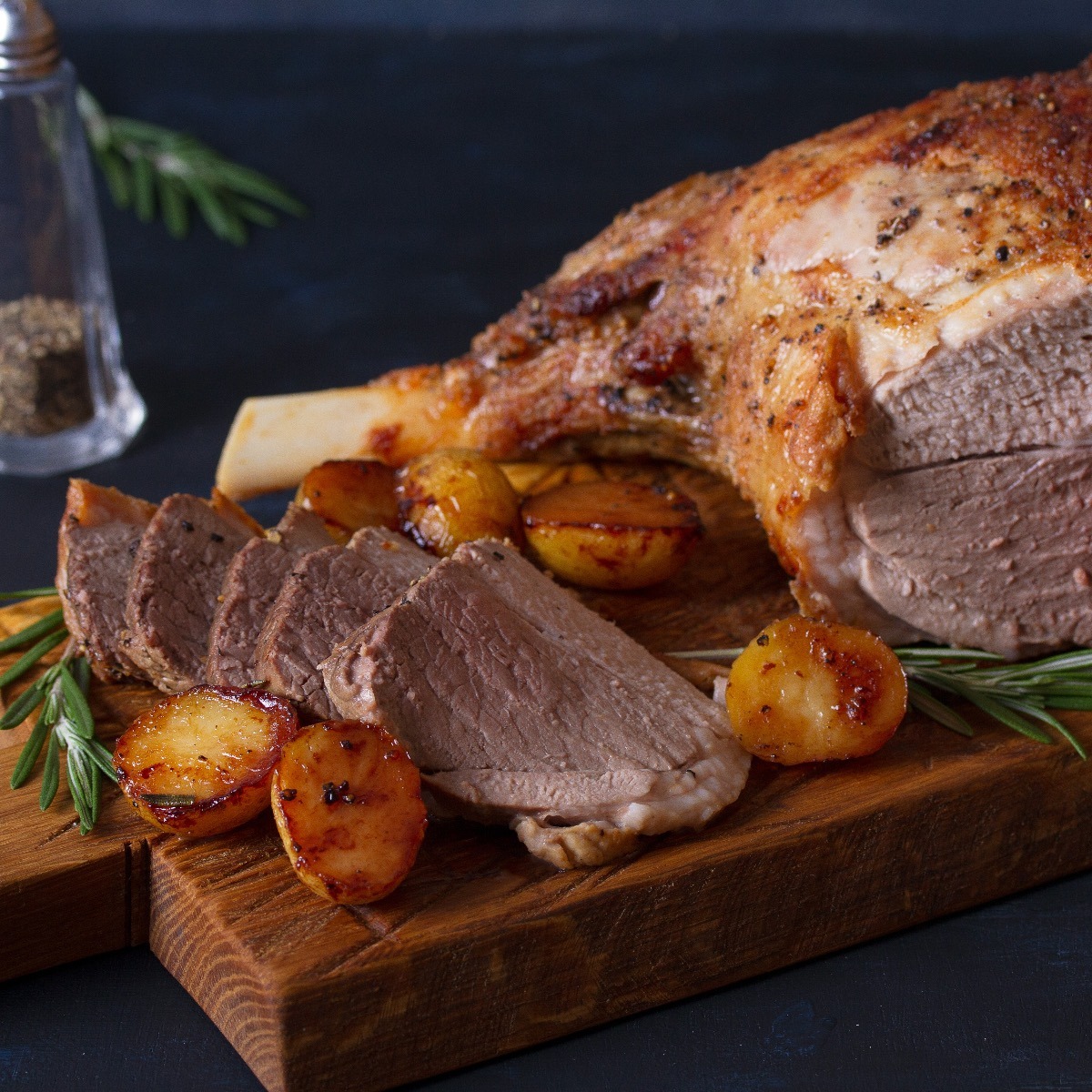
What about the cost compared to the boneless leg of lamb?
The cost of a bone-in leg of lamb is generally lower than that of a boneless leg of lamb. This price difference is primarily due to the additional labor and processing involved in deboning the meat. When you purchase a boneless leg of lamb, you are paying for the convenience of not having to deal with the bone and the ease of preparation.
On the other hand, a bone-in leg of lamb requires less handling and processing, as it is sold with the bone still intact. This makes it a more cost-effective option for those looking to save money while still enjoying the flavors and benefits of cooking with the bone.
However, it’s important to note that the cost difference may vary based on several factors, including the region, the cut of meat, and the specific market conditions.
Additionally, the price gap between bone-in and boneless leg of lamb might be insignificant, so it’s essential to check with your local butcher or meat supplier to get the most accurate and up-to-date pricing information.
When deciding between bone-in and boneless leg of lamb, consider your budget, cooking preferences, and the dish you plan to prepare. While a bone-in leg of lamb may offer some cost savings, a boneless leg.

